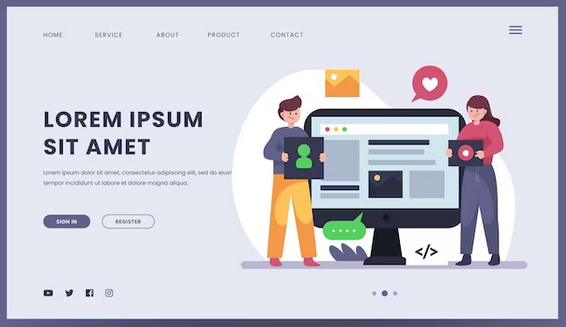Creating a user-centered design for your WordPress website is essential for providing an exceptional user experience. User-centered design (UCD) puts the needs, preferences, and behaviors of your target audience at the forefront, allowing you to build a website that is not only stunning but also highly functional and easy to navigate. In this article, we will explore the key principles and strategies to implement a user-centered design for your WordPress site.
Read: Web Design Outsourcing: Elevate Your Business With Expert Design Services
Contents
Understand Your Target Audience
The first step in creating a user-centered design is to thoroughly understand your target audience. Conduct user research to gather insights into their preferences, pain points, and expectations. Use methods such as surveys, interviews, and analytics data to gain a comprehensive understanding of your users’ needs.
Develop User Personas
Once you have collected data from your research, create user personas that represent different segments of your target audience. User personas are fictional characters that embody the characteristics and behaviors of your typical users. These personas will serve as a reference point throughout the design process and help you make user-focused decisions.
A user-friendly navigation system is crucial for guiding visitors through your website effortlessly. Keep the navigation menu simple and well-organized, using clear labels that align with user mental models. Avoid clutter and prioritize the most important pages or sections for easy access.
Optimize Page Load Speed
Page load speed is a critical factor in user experience and search engine rankings. Optimize your WordPress website for speed by compressing images, leveraging browser caching, and minimizing unnecessary scripts. A fast-loading site reduces bounce rates and keeps users engaged.
Read: The Importance of Google PageSpeed Insights
Mobile Responsiveness
In the mobile-first era, ensuring your WordPress website is fully responsive on various devices is non-negotiable. Test your site on smartphones, tablets, and different screen sizes to guarantee a seamless experience for all users. Responsive design ensures that your content adapts to different devices without sacrificing usability.
Use Intuitive Content Layouts
Present your content in a well-structured and intuitive manner. Use headings, subheadings, and bullet points to break down information into easily digestible chunks. Make use of whitespace to avoid overwhelming users and enhance readability.
Implement Call-to-Action (CTA) Buttons
Strategically place clear and compelling call-to-action (CTA) buttons throughout your website. CTAs prompt users to take specific actions, such as signing up for a newsletter, making a purchase, or contacting you. Use contrasting colors and persuasive language to make the CTAs stand out.
Prioritize Accessibility
Ensure that your WordPress website is accessible to all users, including those with disabilities. Use alt text for images, provide transcripts for videos, and ensure that your site can be navigated using keyboard-only inputs. Accessibility not only improves the user experience but also makes your website inclusive and compliant with accessibility standards.
Test Your Design
User testing is a critical phase in the user-centered design process. Conduct usability testing with real users to identify any usability issues and gather feedback on their experience. Observing users interact with your website provides valuable insights for optimization.
Iterate and Improve
A user-centered design is an iterative process. Use the feedback gathered from user testing to make improvements to your website continually. Stay up-to-date with the latest UX trends and make data-driven decisions to enhance the overall user experience.
Related: Title Font Trends In Web Design
Conclusion
Designing a user-centered WordPress website is not just about aesthetics; it is about putting your users at the core of the design process. By understanding their needs, preferences, and behaviors, you can create a website that resonates with your audience and delivers an exceptional user experience. Remember to continuously collect feedback, iterate, and improve to ensure your website remains user-centered and competitive.




